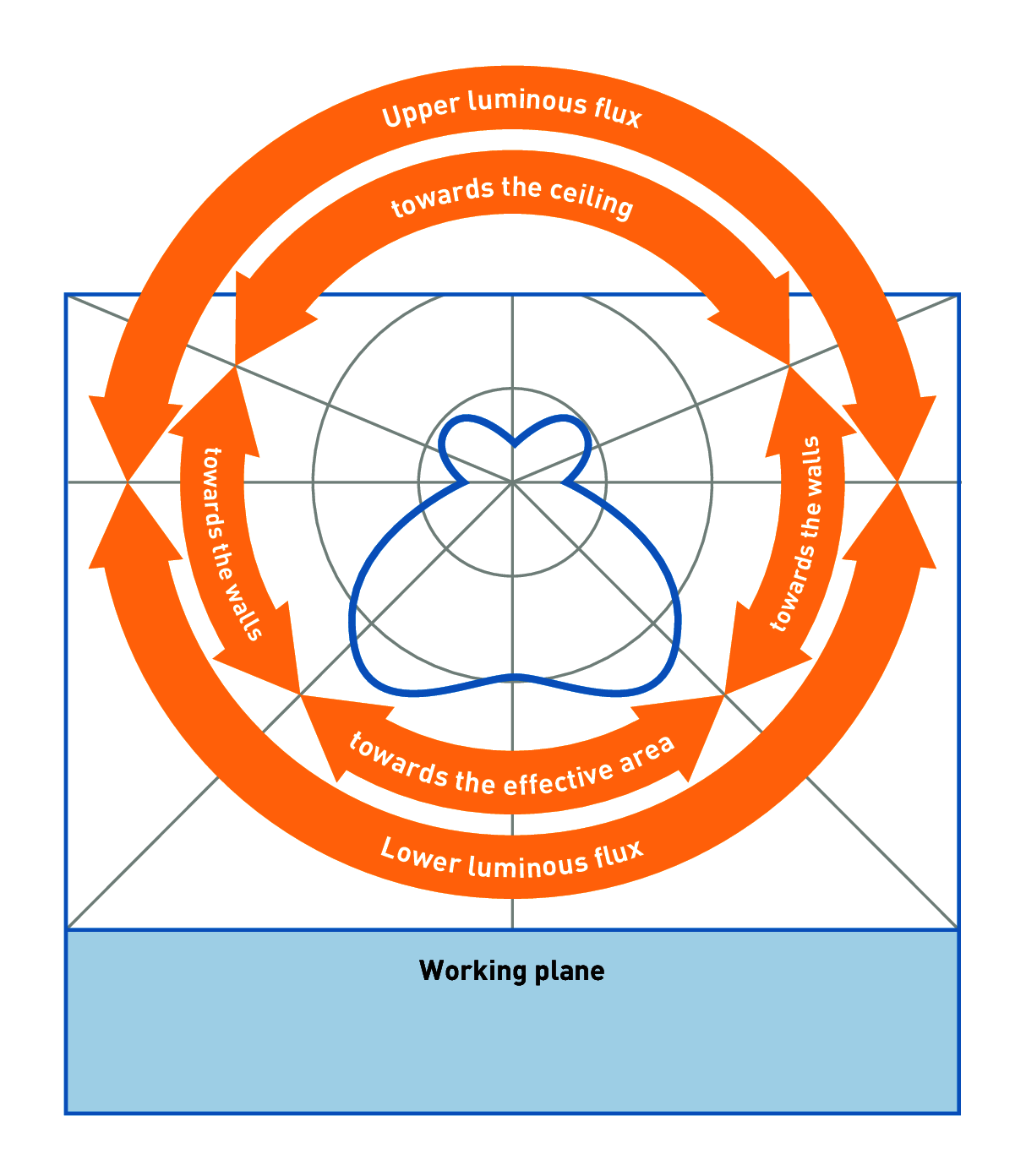The photometric effect of a luminaire in an empty room depends on its distribution characteristic and the reflection from walls and ceiling (see figure). The reflections from walls and ceiling in turn depend on the reflectance of these surfaces as well as their distance from the luminaire, meaning spatial geometry. If there are objects inside the room, their optical properties as well as their geometric position from the luminaire must also be considered.
Lightdistribution and photometrical effect

Figure 3.161: Luminous flux distribution of a direct-indirect-distribution luminaire in the room
Modern design programs today (see chapter "Photometric design software DIALux and Relux") can determine the photometric effects of luminaires very precisely. This way, e.g. illuminance or luminance can be calculated for any surface in a room with great precision. Correspondingly, illuminance can be determined on any given measuring surface or measuring plane anywhere in the room.
The distribution characteristic of the luminaire is usually specified using a luminous intensity distribution. To this end, the luminaire is treated like a point light source. This so-called distant field observation leads to sound calculation results in software programs if the exact spatial location and extent of the light emission from the luminaire has only little influence on the result in the measuring plane. In case of large luminaires with elongated or planar light emission, photometric programs will divide them up into several light points located at regular intervals (see also chapter ).
To describe a luminaire, the luminous intensity distribution can also be divided into solid angle ranges where portions of the luminaire's total luminous flux are distributed (see figure). This is referred to as luminous flux distribution. An important measuring plane is the working plane, where the visual task is located in many applications.